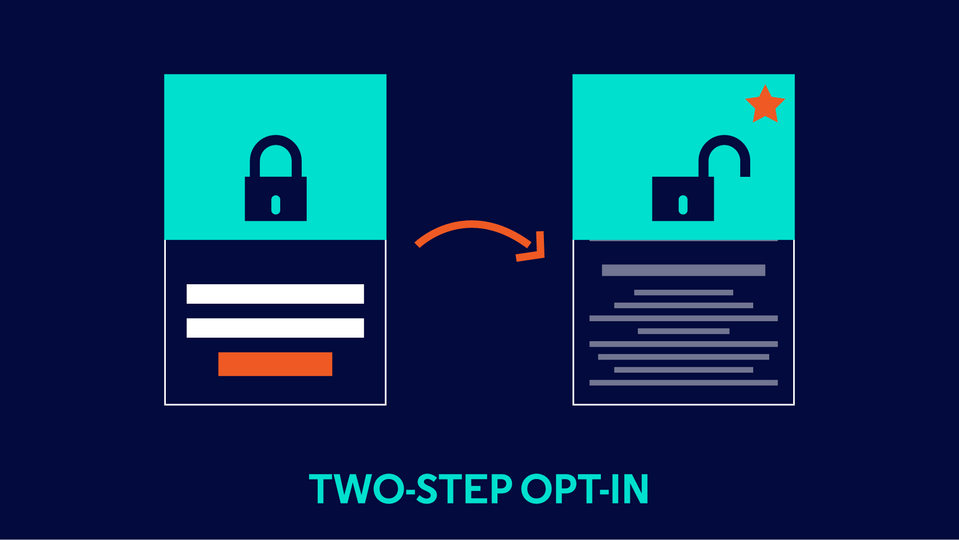
Where to Put a Form on a Landing Page?
You already have a website, and you are wondering how to promote your services and products effectively? You plan to create a landing page or have already created one, but you feel that you are still far from achieving your marketing and sales goals? Please read our article and find out why the placement of a form on a landing page is important and can affect your success.
What is a landing page and why is it important for your website?
A landing page is basically a type of a website or its part (a subpage). Therefore, we can assume that a landing page is a subpage, or an offer page used to conduct marketing activities. Contrary to a website having an informative function, a landing page aims to convince the internet user to perform a specific activity, and its content usually concerns one specific product. This activity is the so-called "conversion", and it does not necessarily have to mean the purchase of a product or service (but it may – and often does). A landing page is where the traffic from ads on Facebook and Google Ads is often directed. Adding a landing page will allow you to shorten the time of creating marketing campaigns.
If you are wondering if you need a landing page, the answer is simple: yes, you do. However, not every such a page will be effective. You can count on good results if you take care of an interesting design, intuitiveness, engaging content and, of course, the consistency of the landing page with the ad – remember that the topic of the ad should be closely related to the content of the page; otherwise, it is very likely that you will soon notice an increase in the bounce rate and you will waste the money invested in advertising.
Remember to formulate the goal for your landing page clearly. With a page like this, you can achieve a lot:
- increase sales,
- build an extensive database of potential customers,
- obtain the necessary information from customers,
- encourage a large group of people to subscribe to your newsletter.
As you can see, there are plenty of possibilities, so before you start creating a landing page, be sure to think about what you expect from the customer when they are redirected from the ad to the page. In order to achieve your goal, you usually need to involve your customer in performing some activity on your website – making an appointment with your company's consultant, sending you their email address or other contact details. This is why a landing page must contain a form (an appropriate one – find out how to design a form well). What are the types of forms?

Pop-up form – what is that?
You have entered a website or are browsing the content, when a bright, colourful window appears in the middle of the screen, informing you that you have won a prize and someone wants to set up with you the terms of claiming it, so you have to click on a link or provide data – this surely has happened to you too.
Irritating? Indeed, because advertisers were once abusing this type of advertising methods. Today, these heart-attack-inducing notifications are no longer everywhere – they have undergone a transformation and now appear as pop-up forms. The designers of these elements also took care of better design and animation, so although pop-up form windows still arouse mixed emotions in users, they are more likely to enter their contact details.
There are various options for designing the appearance of a pop-up form. It may appear on the website, e.g., after a certain amount of time has passed (e.g., after 5-10 seconds), after a certain amount of content has been scrolled down (e.g., when the user finishes reading or has only read the first paragraph – this approach is often used on blogs when you want the user to subscribe to the newsletter; providing an email allows for accessing the rest of the content. You should also consider setting the frequency of the pop-up from appearing. Sensible use of pop-ups should not negatively impact the user experience and may allow you to achieve a satisfactory conversion rate. If you are interested in this type of form, it may be worth to make it appear at the end of the landing page, so that the customer has time to read and become interested in the content of the landing page. Remember that apart from the sales goals, it is extremely important to provide the user with a pleasant experience while they are browsing your website – our Drupal agency can help you improve the user experience. Once you have their attention, it is worth to ask for contact details or signing up for a newsletter. The strategies are many.
The placement of a form on a landing page – is it important?
Can a form be a permanent element of a landing page? Of course! At Droptica, we know that a good Design/UX of a landing page is the basis of success. The form must be visible, but also well-adjusted to the design of your website. You can put your form in different sections of the landing page. Alternatively, it could be an element that appears after a certain period of time has passed (like a pop-up) or when a particular button is clicked.
Such a form must stand out from the landing page. After all, it is about making contact with the customer, so the design and the placement of the form on the website site are very important.
A form in the header or footer of a website
The footer is one of the least noticeable and interesting sections of a page. If you want to put a form on the landing page in this exact spot, it will be necessary to highlight this element on the page. Being added there is often not the complete form, but a button that opens the form window. A well-highlighted button is undoubtedly an elegant way to increase your conversion rate.
The header is the first section the reader sees after being redirected to the ad's landing page. An appropriate slogan prompting to perform an action and a visible button can allow you to obtain the data you need quickly. Putting the form at the top of the page makes it easy to find.
Is it worth to put a form between individual articles?
This practice can often be seen on blogs and in online magazines – is not a good idea? Not necessarily. On websites with a large number of articles and content, such a form is easy to overlook – especially since most readers these days are merely browsing the text, rather than reading it carefully in its entirety. When scrolling quickly, it is easy to miss some content, let alone a form.
Theoretically, the reader does not have to deal with large blocks of text on a landing page. In most cases, landing pages consist of a large number of infographics, diagrams, tables, slogans, or small pieces of text. On such a page, it is much easier to find the contact form among its elements. It is certainly an interesting solution, in the case of which, however, the success depends on the experience of the landing page designer and the quality of the design.

The advantages of putting the form at the top of the page, next to the content
Contact forms are often found in the column next to the actual page content. Other elements may also appear in it. Sometimes the form fills the entire space of the column or follows the reader while they are scrolling – thus it is clearly visible at all times.

Form at the bottom of a page – maybe this is a better solution?
Many users will find an unobtrusive request to complete a form at the bottom of a landing page agreeable. Thanks to such an approach, you give the Internet user time to read the landing page's content. Before you ask for their data, you can convince them to your brand with interesting content and increase the conversion likelihood. Of course, you need to keep in mind that not every user reaches the end of the page.

Two-Step Opt-In form – what is it about?
These forms can be a pop-up or a subpage with a contact form, to which the user is being redirected after clicking on a CTA (call to action) button to learn more about the offer. This is one of the current trends in e-commerce when it comes to contact forms. After clicking the button, the customer receives some kind of value – additional information about the offer, discount code, access to a training course. After receiving it, a large number of users are willing to go to the next stage and provide you with their data.
This is basic psychology – an Internet user who receives something from you first looks at your brand with a more favourable eye and more willingly shares information about themselves than the one who is bombarded with notifications and requests for contact or data from the very first minute spent on the website.
What are the types of forms?
There are many styles and types of forms. It all depends on the purpose of your landing page. You can choose a simple form or use image boxes that will catch the eye thanks to an attractive photo or graphic element. You can also animate the forms – shake boxes will "shake" on the screen, attracting the user's attention. Below you will find some examples of popular contact forms that you can use on your landing page:
- Fixed bar – instead of pop-ups, brightly-coloured forms taking half the page, or completely invisible elements, you can add on your website a form in the shape of a small but visible bar.
- Sign-up box – a simple, small form that requires entering little data (often just an email address).
- Exit Popup – it is a type of a pop-up that appears when the customer leaves the website. It is a tool thanks to which you can obtain data, but also convince the customer to stay on the landing page.
- Scroll – appears on the page when the user is scrolling.
- Download Box - a form that allows Internet users to download a file after completing the registration or sending contact details.
You have many options – remember that only certain types of forms will help you achieve your goal.
Putting a form on a landing page – what is your choice?
If you are looking for the right marketing automation tool, you should consider using the Mautic open-source software. Embedding forms on a landing page using this tool is unimaginably easy, and this is just one of its advantages. It is great for personalising your content and will help you manage your marketing campaigns. Contact us if you want to know more!









